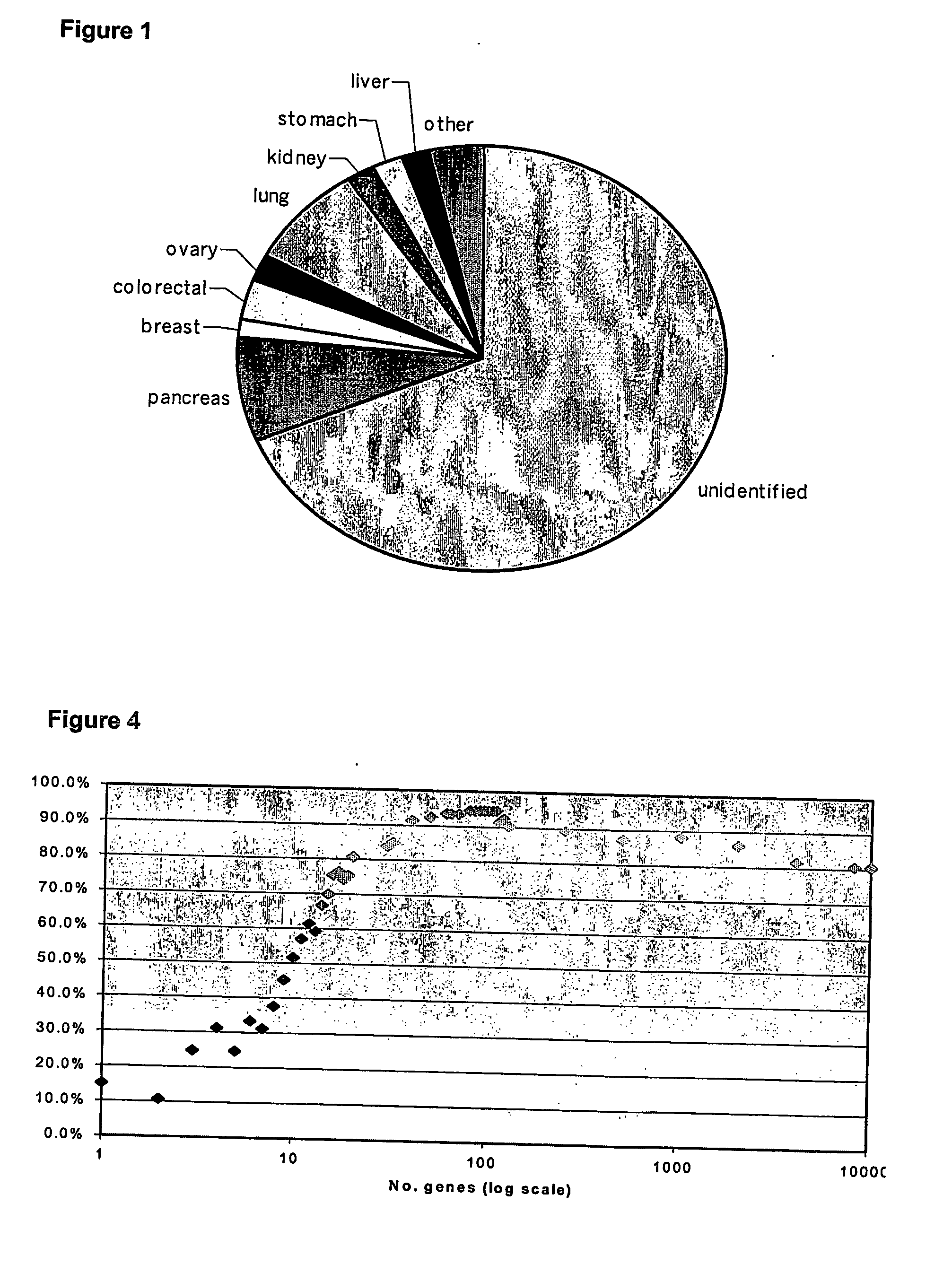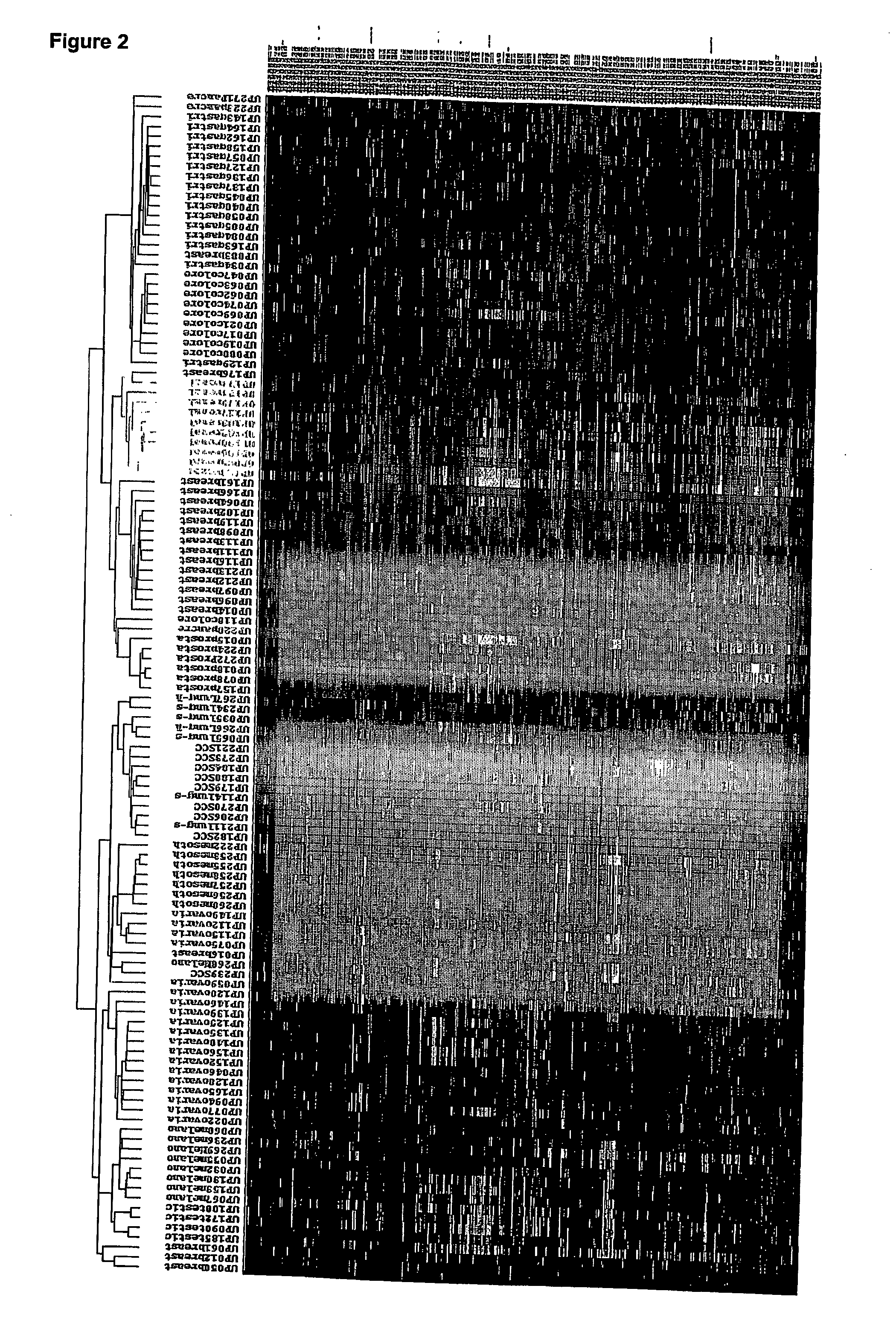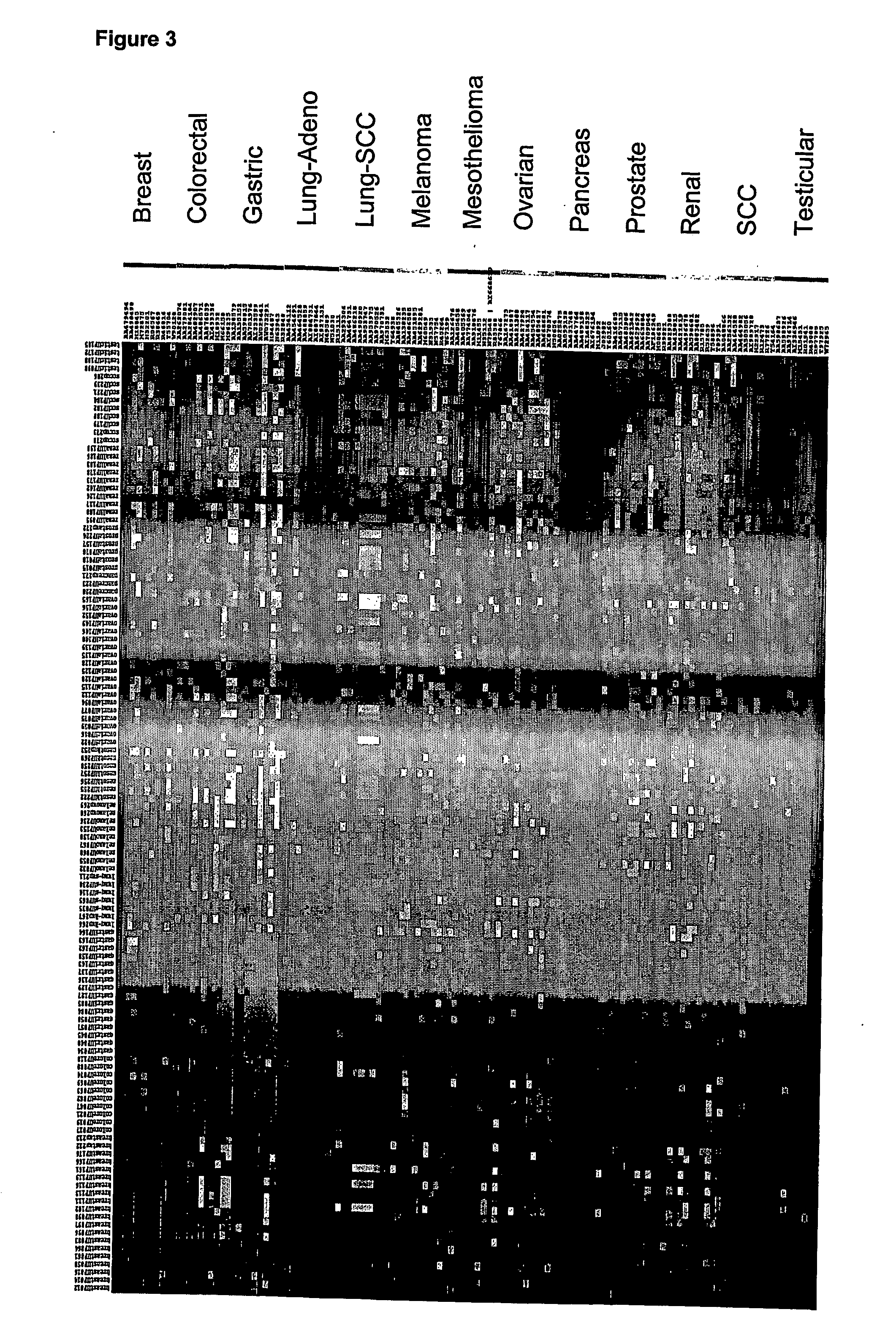Expression profiling of tumours
a tumour and expression technology, applied in the field of expression profiling of tumours, can solve the problems of clinicians with dilemmas, how far to take investigation, delay recovery or no effect on the disease, etc., and achieve the effect of easy translation, robustness and reproducibility
- Summary
- Abstract
- Description
- Claims
- Application Information
AI Technical Summary
Benefits of technology
Problems solved by technology
Method used
Image
Examples
example 1
Creating a Gene Expression Database
[0095] A training dataset containing the gene expression measures of approximately 10,000 genes in a wide range of human tumour types was created. To develop the dataset, and also to ensure its usefulness for diagnosing tumour type from small biopsies, a protocol incorporating an amplification step in preparation of labelled cDNA for hybridisation was used. The protocol reliably produced expression data from 3 μg of starting total RNA. Amplification was an important approach to take, as the amount of tissue available is often limited to small amounts in excess of tissue required for other diagnostic purposes. In particular, the approach allows utilising small biopsies (for example core biopsy or fine needle aspirate) of tissue collected from metastatic deposits that would otherwise not be collectable by excision biopsy.
a) Collection of Tissue Samples
[0096] All human tumour material was collected and used in accordance with the Ethical Principle...
example 2
Profiling a Tumour Sample
[0098] Samples of RNA from 121 well characterized tumour samples were analysed. To ensure the authenticity of the gene expression profiles and not to introduce errors into the class prediction algorithm, the diagnosis of these samples was verified by histopathology prior to inclusion in the study. RNA from tumour samples was isolated, amplified, and labelled, and the resulting labelled cDNA was hybridised to a spotted cDNA microarray containing 9,389 unique genes (UniGene build 144). After filtering to remove unusable spots, the data were normalized. Unsupervised hierarchical clustering using all genes in the filtered and normalized dataset showed the tumours grouped into their tissue of origin (FIG. 2), although not perfectly. This is a not an unexpected observation and is in agreement with other studies of a similar type. A list of genes that were significantly different in expression (p<0.05) between all the different tumour groups was then identified us...
example 3
Diagnosis of Metastatic Tumour in the Ovary and Identification of Extra-Ovarian Origin
[0103] To demonstrate the wider utility of this approach to diagnosing metastatic tumour in the ovary, we analysed three samples of tumours from the ovary which were atypical presentations suggestive of an extra-ovarian origin for the tumour. Expression data from these samples strongly suggested a colorectal origin for these tumours (p<0.001 in all cases). Using only the unequivocally diagnosed ovarian and colorectal tumours in the training dataset, we identified a list of 55 genes which were significantly different between the ovarian and colorectal tumours. Importantly, several genes already known to be discriminators between these tumour types were included in the list. Using just these 55 genes, the five cases described above were clearly identified as colorectal in origin, and not unexpectedly, all ovarian and colorectal tumours were correctly segregated. We suggest that these genes are likel...
PUM
| Property | Measurement | Unit |
|---|---|---|
| iterative signal to noise ratio | aaaaa | aaaaa |
| iterative signal to noise | aaaaa | aaaaa |
| imaging techniques | aaaaa | aaaaa |
Abstract
Description
Claims
Application Information
 Login to View More
Login to View More - R&D
- Intellectual Property
- Life Sciences
- Materials
- Tech Scout
- Unparalleled Data Quality
- Higher Quality Content
- 60% Fewer Hallucinations
Browse by: Latest US Patents, China's latest patents, Technical Efficacy Thesaurus, Application Domain, Technology Topic, Popular Technical Reports.
© 2025 PatSnap. All rights reserved.Legal|Privacy policy|Modern Slavery Act Transparency Statement|Sitemap|About US| Contact US: help@patsnap.com



